A guide to grow lights PAR, PPFD, Wattage and DLI

From home growers to licensed commercial growers, knowing which type/power grow light to get for your grow room is one of the key decisions. But what is meant by the sometimes confusing technical terms such as PAR, PPFD, DLI and Wattage? What do they tell you about the grow light, it’s performance and how much value it offers?
Before you splash the cash on any potential grow light upgrade it’s important to understand precisely what is meant by the various technical terms which comes with modern lights. Once you understand the basics you will be able to explore new grow light options with added confidence.
Cannabis PAR, PPFD, DLI and wattage explained
Upgrading to LED grow lights is often the most expensive grow room upgrade a grower will make. LED has been getting gradually more and more affordable over recent years. But equipping your 1.2m x 1.2m grow room with a decent quality LED light, (typically 400-650W actual power draw) at 2021 prices, might not give you much change from €/£/$ 750-1000. That makes it extra important that you fully understand the technical specifications which you are paying for, and what they mean. PAR, PPFD, DLI and Wattage are some of the more important terms you should understand.

What is Photosynthetically Active Radiation (PAR)?
PAR light describes the photosynthetically active radiation between 400nm (blue light wavelengths) to 700nm (red light). It is called ‘photosynthetically active’ since the light is the energy source required to drive photosynthesis (and therefore growth) within the plant.
It’s worth adding that PAR from 400nm-700nm doesn’t actually encompass all the usable wavelengths. UV (Ultra violet) light and IR (Infra red) wavelengths fall just outside this range but are still useful to cannabis.
Ultraviolet vs infrared light and UV-A/UV-B effects on cannabis

UV light is comprised of three separate bands, UV-A (315-400 nm), UV-B (280-315nm) and UV-C (100-280nm). Of these, UV-A and UV-B are most useful to the cannabis plant, especially later in bloom. UV light is part of the natural solar spectrum which plants have adapted to over millions of years. To human skin, UV-A has an ageing effect whereas the more energy intensive UV-B can produce sunburn. UV-C is the most powerful and biologically damaging of all UV light, it can kill on contact and is used for sterilising objects. The Ozone in the earth’s upper atmosphere removes UV-C before it reaches ground level, meaning that sun-light at sea level contains just UV-A & UV-B.
Many professional growers now supplement their grow room with UV-A and UV-B light. This is proven to boost terpene levels and cannabinoid content. UV light supplementation typically comes from fluorescent tubes rather than LED. That’s because it is simply cheaper to do it that way, though in future many hope that affordable (and sufficiently powerful) UV-A and UV-B LED’s become available. Adding extra UV-A and UV-B light to the grow room is a proven way to push the quality levels up though it won’t significantly increase yield.
Infra-Red (IR) wavelengths over 700nm stimulate phytochrome (a natural pigment) within the plant. These are essential photoreceptors involved in the regulation of aspects of growth and bloom. A good LED grow light should contain enough infrared light to produce a plant with full stem growth, proper node spacing and higher yields.
What is Photosynthetic Photon Flux Density (PPFD)?


Two other important terms you will come across when looking at LED grow lights are Photosynthetic Photon Flux Density (PPFD) and Micromoles (μmols). This is a way of measuring light intensity.
PPFD measures the amount/quantity of PAR light photons that are delivered to your plant canopy in one second. It’s measured in micromoles (μmols) per square metre per second (μmol/m2/s). In simple terms you can think of PPFD as a measure of the strength of the light above your plants.
Since many people don’t really understand the units (μmol/m2/s ) that PPFD is measured in, many people simply say ‘μmol’ rather than μmol/m2/s. Others, for the sake of simplicity, just refer to a PPFD number without any units at all.
The light loses strength (PPFD numbers will therefore decrease) the further away it is from your plants. Responsible LED grow light manufacturers will have recommended hanging heights for their lights at various stages of plant development.
What is Daily Light Integral (DLI) and how much is required for cannabis?
PPFD is the amount of light striking a 1m2 canopy in 1 second. If you multiply that number by 86,400 (there are 86,400 seconds in a day) you have the Daily Light Integral (DLI). Usually this is measured in Moles. A Mole is a million micro-Moles.
If you have an LED grow light with average PPFD levels of 750μmol/m2/s across your canopy the DLI (in 24 hours) would be 64.8 Moles of light:
750μmol/m2/s x 86,400s = 64,800,000μmol/m2 = 64.8mol/m2
If you had that light on for 50% of the time during bloom i.e. 12 hours per day, the cannabis plant would therefore receive 32.4 moles of light per day (64.8 divided by 2 = 32.4)
Wattage considerations for MH vs HPS vs LED grow lights

LED Wattage can be a particularly misleading way of assessing the power of a potential LED light. Watch out for it in the marketing of some of the less desirable LED grow light imports. Wattage is merely a measure of the amount of power used, not a measure of the amount of useful light produced.
You could have two lights with a 400W power draw, but one could be using LED’s that are twice as bright (twice as efficient) as the other. The best LED light manufacturers will use modern, efficient LED’s that convert 50% of the electricity into light. Low cost LED’s will have half that efficiency i.e. they will only convert 25% of the electricity into light. So ‘Wattage’ only tells you how much power is being drawn, not how efficiently it is being used or how much light is being generated from that electricity.
If you want to know more about the quality of the LED ‘chips’ in a given fixture, check the efficiency rating given by the manufacturer. The better LED grow light manufacturers will be able to explain the type of drivers and LED chips used. Premium quality LED grow light manufacturers should also be able to provide you with a chart, showing expected PPFD levels at various light hanging heights for each of their lights in various size tents.
If you want a clear and simple explanation about wattages for LED & HPS as well as a guide to corresponding plant numbers, the following article provides some expert insights.
Related:
How many cannabis plants can I grow per square metre and what size light is needed?
How much light (PPFD) do photoperiod cannabis plants need?

The table below gives a guide to the PPFD requirements at different stages of the cannabis growth cycle. Note that cannabis will grow well across a range of light levels – it’s not critical to measure and maintain specific values. Some strains (and the phenotypes within that strain) may have their individual leanings when to comes to preferred light intensities.
| PPFD During Seedling Phase | PPFD During Vegetative Phase | PPFD During Flowering Phase | |
| Light cycle | 18h/daily | 18h/daily | 12hr/daily |
| Moderate Cannabis Yield (minimum light needed for a reasonable result): | 100-150 μmol/m2/s | 300-400 μmol/m2/s | 600-700 μmol/m2/s |
| Max Cannabis Yield (maximum ‘typical’ light needed): | 200-300 μmol/m2/s | 500 (up to 600) μmol/m2/s | 800-1000 μmol/m2/s |
Cannabis seedling stage PPFD

Cannabis seedlings don’t need too much light, PPFD levels of around 200-300μmol/m2/s are sufficient in combination with (around) 18 hours of daily light. The small size and delicate seedling tissues are easily overloaded and damaged by excessive light levels. Low light levels allow the seedling to gradually increase in size, reaching a point where they can tolerate more light intensity.
Related:
Cannabis seedling stage, how-to guide
Cannabis vegetative stage PPFD

Cannabis is often given light with PPFD levels of around 300-500μmol/m2/s during vegetative growth. Some growers will offer even stronger PPFD levels of around 600 though others might argue such PPFD levels are not really required in veg. During vegetative growth the plant will produce leaves, branches and roots but no buds.
Related:
Cannabis vegetative stage how to guide
Cannabis flowering stage PPFD

In late bloom many growers aim for maximum PPFD levels of up to/around 1000μmol/m2/s when growing photoperiod feminised cannabis seeds. Some people may even push for PPFD levels of 1500 when supplementing with CO2 in late bloom. However, the experienced grower will note that some strains (and indeed certain phenotypes within the strain) are able to be pushed to higher PPFD levels than others before showing signs of stress. So there is no clear ‘one size fits all’ policy when it comes to PPFD and cannabis cultivation.
Many autoflower growers using long photoperiods (e.g. 20 hours per day) will err on the side of lower PPFD levels (perhaps nearer 700-800) simply to avoid pushing their plants too hard and risking light-burn problems as a result.
It’s worth mentioning that adding increasing amounts of light to the grow room don’t necessarily result in ever-increasing yields. Eventually the plant reaches saturation point and the law of diminishing yields applies. In other words, adding more light doesn’t improve yields and may actually become a stressful growth limiter.
This is mentioned so the grower is aware that excessive light levels can be an expensive way of causing entirely avoidable grow-room problems. Less experienced growers in particular are advised to be cautious when it comes to attempting to maximise PPFD levels. It may be safer to gain general grow experience at moderate light intensity levels before trying to ‘push the envelope’.
Related:
Cannabis flowering stage, how-to guide
How much light (PPFD) do autoflower cannabis plants need?

Many growers tend to deliver slightly lower PPFD levels to autos compared to feminised strains. That’s because autoflowers grow with (typically) 20 hours of daily light, significantly longer than the 12 hours used by photoperiod strains. That in turn means that the DLI for autoflowers can get very high if long photoperiods are used in conjunction with powerful, modern LED grow lights.
For that reason, many autoflower growers using 20 hours of daily light might aim for PPFD levels of around or even below 700. Whereas they might use PPFD levels of nearer/above 1000 when blooming feminised strains. Having said that, the more experienced autoflower grower may feel comfortable pushing PPFD levels up towards 1000 near the end of bloom if the plants are thriving. However, it’s safest to do this on a case-by-case basis when the grower can use their experience to assess how that particular strain is coping with high PPFD levels in those specific circumstances.
Again, if in doubt, autoflower seed growers (especially less experienced growers) may prefer to initially lean towards lower PPFD levels of up to 700-800… only exceeding those levels when the plants are coping well and happy to be pushed harder. Growers keen to push PPFD levels as high as possible should remember the law of diminishing yield returns. Chasing maximum PPFD levels can be expensive if you are buying a high-end LED light. It may only mean modestly increased additional yields and it can come with the risk of plant problems if PPFD levels are too high for your particular strain.
However, when supplementing the grow room with CO2, higher PPFD levels can be tolerated by both feminised and autoflower strains.
Related:
Autolower cannabis plants light schedule
How to measure grow light intensity (PPFD)?

Light meters are expensive, expect to pay several hundred €/$/£’s when buying one. The Apogee SQ500 is well rated. So too is the much more affordable SpotOn Quantum PAR Meter. A light meter will show you useful data such as the PPFD levels at various hanging heights for every part of your grow room canopy.
It can also show you the light spectrum from your light. However, for most growers, that’s a lot to pay for a one-off light intensity plot of their grow room. You can hire a light meter from specialist retailers for the weekend and that might seem like a more sensible way to map your grow room light levels.
But the easiest option is to only buy your next LED grow light from a professional supplier that can supply PPFD readings to you. Many of the more serious suppliers know exactly what the PPFD levels are produced by their lights and are only to happy to share that information. Usually they will be able to show a map of expected PPFD levels in different sized tents – essential information when you’re making a big investment.
Learn how to read a PPFD chart
Often a grower will be looking for PPFD levels of around e.g. 700-1000 across the canopy, from centre to corner. The experienced grower will want to see similar PPFD levels across the canopy. This will give far superior results compared to a badly specified light which delivers a central hot spot and low intensities around the edges.
Often the light supplier will breakdown the area underneath their grow light into a grid of equally sized squares each with their own expected PPFD level for a given hanging height.
Which grow lights provide the best PPFD output?

The main grow light options are HPS (High Pressure Sodium), CMH (Ceramic Metal Halide) and LED (Light Emitting Diode).
HPS grow lights
HPS lighting is the most affordable option for those on a budget and has historically been the most popular indoor grow light for cannabis. However one downside of HPS is the inherently high levels of heat production which in turn creates stress for the plants. That’s one reason why those looking for maximum PPFD output are less and less convinced about HPS. Furthermore, the HPS light spectrum is heavy in less-useful orange/yellow wavelengths. HPS was never designed for cannabis cultivation, it was a cheap option which happened to work. But HPS is now becoming less and less popular. It’s a good option for those on a budget, but serious growers are now looking towards other technologies to produce the best results.
Ceramic Metal Halide (CMH) grow lights
CMH lies between LED and HPS in terms of affordability. CMH can come in blue-rich and red-rich variants for veg and bloom use respectively and many view it as a more efficient step-up from ageing HPS technology. However, CMH has failed to capture the same amount of attention from licensed pro-growers as LED.
LED grow lights
LED is now the firm technology of choice for serious home growers as well as licensed professionals. LED is a great way to maximise PPFD levels. Premium quality LED grow light suppliers select only the highest efficiency (known as ‘top-bin’) LED chips. These manufacturers will also be able to clearly show PPFD levels across the canopy at different hanging heights. LED grow lights are without doubt the preferred light technology for the modern cannabis grower. The low heat emissions, inherent efficiency, long life and predictable/stable PPFD levels all make LED the choice of the professionals.
What about the grow light distance for cannabis?

Always refer to the manufacturers guidelines and be prepared to use your own judgement to adjust the guidelines to fit your needs and those of the strains you are growing. Hanging heights of HPS lights may be quite different to those of LED.
LED grow lights will have a range of preferred hanging heights according to the grow light design. Some LEDs are mounted on multiple bars (‘Bar-style’ LED), these can often be hung around 20-40cm above your plant canopy. However LED grow lights that compress the light onto a small central panel may have to be positioned 75cm-100cm above the canopy.
Always check with the grow light manufacturer for recommended hanging heights at various stages of plant growth. Remember that the more experienced manufacturers will be happy to answer all your questions on light hanging heights and should have ample experience understanding how their lights suit grow rooms of various sizes.
Choose your grow light setup with confidence
Do your research and take your time. It can be useful to speak to a few grow shops that supply several different grow light brands and ask them about the pros and cons of each. Why do they stock certain brands and not others? Take some time to familiarise yourself with the various grow light brands. This way you will start to understand more about the different technology options and how each may suit you.
Likewise, you may want to speak to several different LED grow light manufacturers directly and find out more about their technology, results and strengths. Grow forums, YouTube and Instagram are also good places to see results and recommendations.
Premium priced LED grow lights tend to have the most efficient LED ‘chips’. These will give you the highest efficiency ratings and the lowest electricity usages but you will inevitably pay for the privilege. Mid-range LED grow lights often pack an attractive combination of ‘good-enough’ efficiency with the best affordability levels. Low-end LED grow lights can be difficult to accurately assess and many serious growers tend to avoid them and the numerous suppliers who offer them. Remember if you buy a good LED you are unlikely to need to replace it. Many growers have had problems with some of the cheaper imported LED lights.
If you have historically grown with HPS then it may be time to consider upgrading to LED. LED may be the most expensive upgrade that you will ever make to your grow room. But it will allow you to reach new quality levels with a higher cannabinoid content and more terpenes. A good quality LED grow light is also likely to last you 50,000-100,000 hours or more. That’s a decade or two of real-world growing.


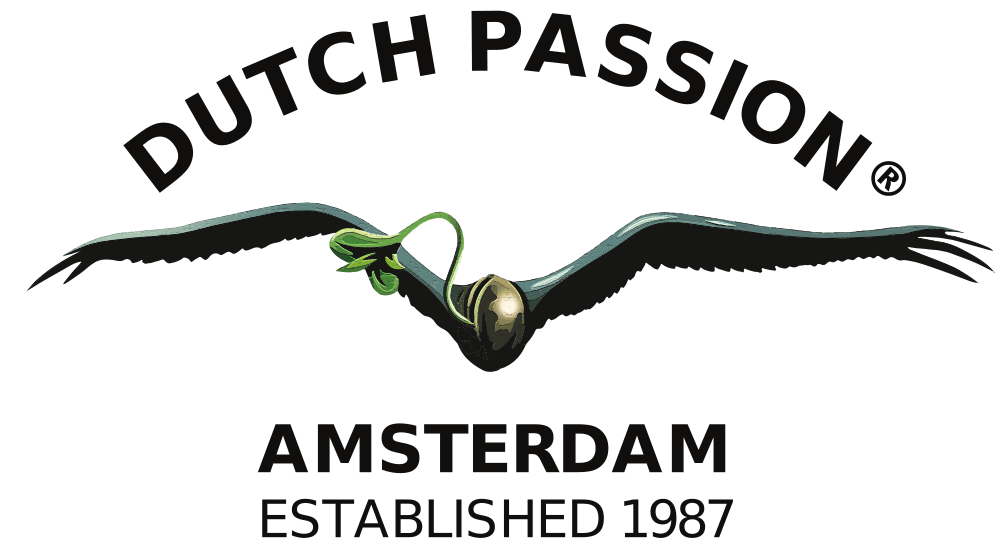




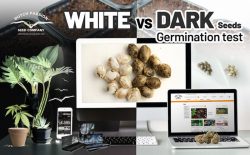



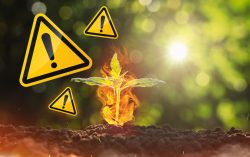

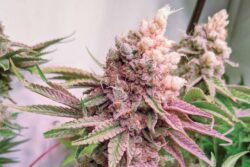

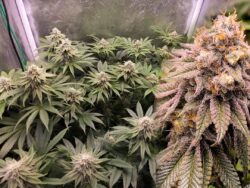
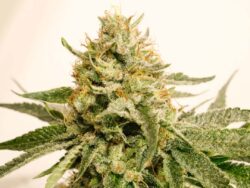
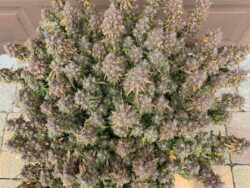
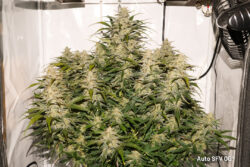

2 Comments. Leave new
Please include the publication date on your articles. This is particularly important for readers to be able to relate articles to ongoing LED technology.
Hi Paul,
Thank you for your feedback. We’re working on it. FYI, this blog has been published on 03/12/2021.